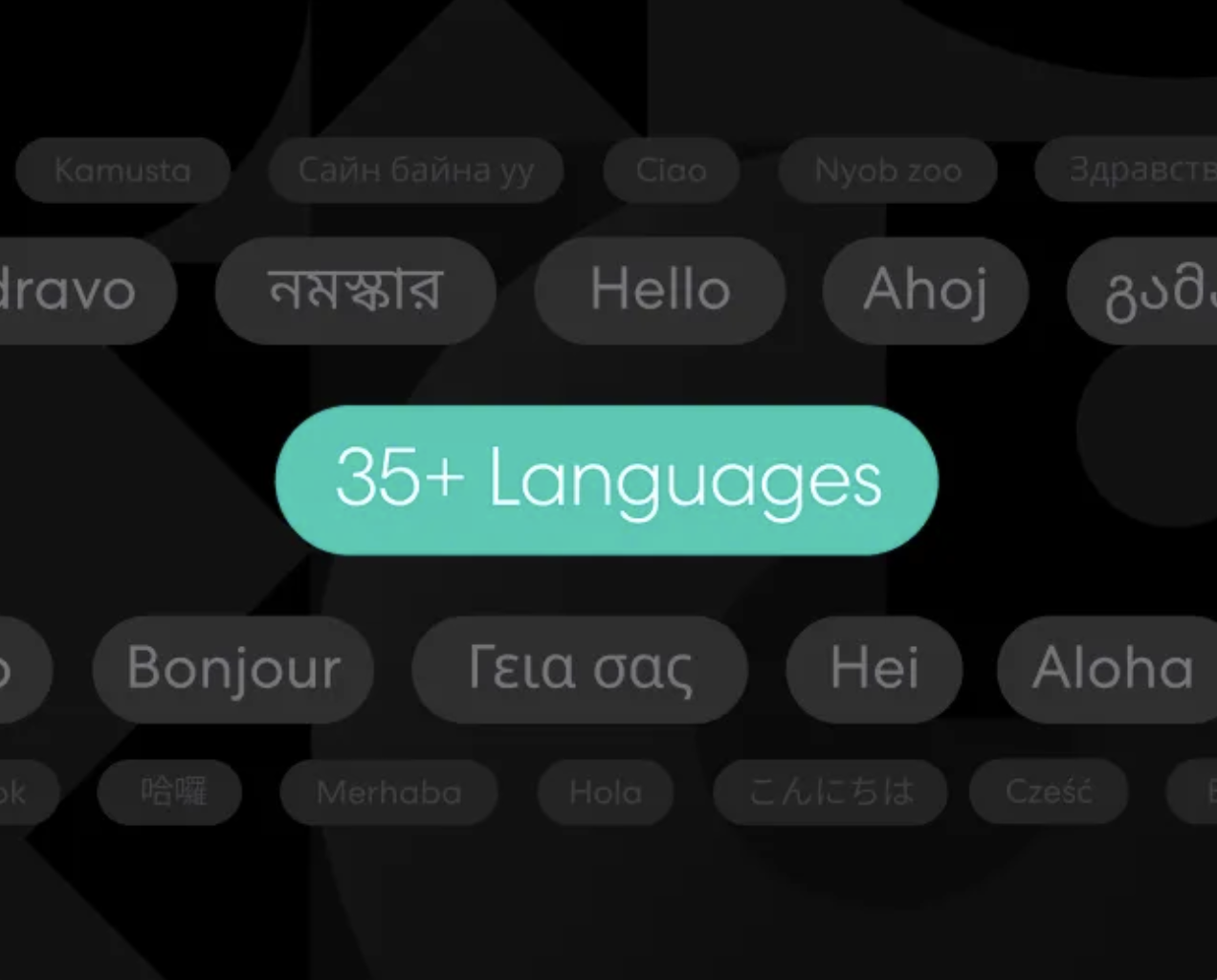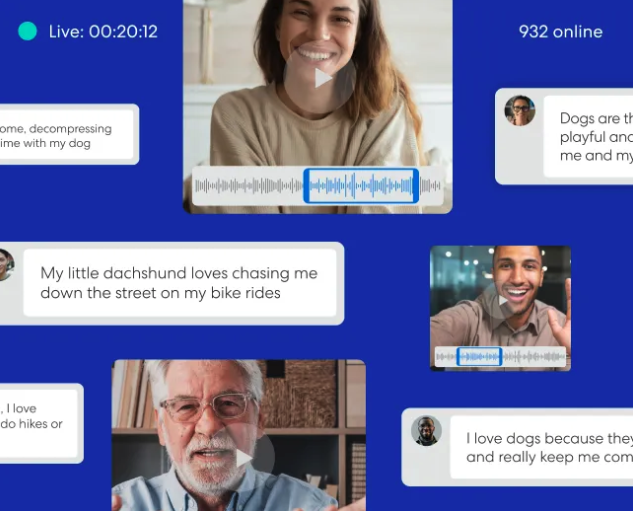
AI
Purpose-Built for Research AI is Here - a Letter from the CPO
Jessica Dubin
October 21, 2025
Market Research
Articles

AI
Purpose-Built for Research AI is Here - a Letter from the CPO
Jessica Dubin
October 21, 2025
Market Research
Articles

Advanced Research
Unlock Agile Global Insights: Using Remesh Multi-Language Conversations for Research Across Audiences
Customer Success Team
October 14, 2025
Market Research
Articles

Advanced Research
Unlock Agile Global Insights: Using Remesh Multi-Language Conversations for Research Across Audiences
Customer Success Team
October 14, 2025
Market Research
Articles

AI
The Prompt Is the New Moderator Guide
Anthony Lam
September 16, 2025
Market Research
Articles

AI
The Prompt Is the New Moderator Guide
Anthony Lam
September 16, 2025
Market Research
Articles

AI
Building an AI-Ready Research Stack: Beyond Data Preparation
Anthony Lam
September 9, 2025
Market Research
Articles

AI
Building an AI-Ready Research Stack: Beyond Data Preparation
Anthony Lam
September 9, 2025
Market Research
Articles

AI
Agentic AI for Research: A Practical Primer
Dan Reich
September 2, 2025
Market Research
Articles

AI
Agentic AI for Research: A Practical Primer
Dan Reich
September 2, 2025
Market Research
Articles

Advanced Research
Webinar Recap: Unlocking Depth at Scale - Remesh Video for Researchers
Customer Success Team
August 5, 2025
Market Research
Webinars

Advanced Research
Webinar Recap: Unlocking Depth at Scale - Remesh Video for Researchers
Customer Success Team
August 5, 2025
Market Research
Webinars

Transparency in AI: How Remesh Builds Trust Through Responsible Implementation
Ross Coudeyras
July 21, 2025
Articles

Transparency in AI: How Remesh Builds Trust Through Responsible Implementation
Ross Coudeyras
July 21, 2025
Articles

Advanced Research
Webinar Recap: Turning Employee Engagement Insights into Action with Remesh
Customer Success Team
June 16, 2025
Employee Research
Articles

Advanced Research
Webinar Recap: Turning Employee Engagement Insights into Action with Remesh
Customer Success Team
June 16, 2025
Employee Research
Articles

Advanced Research
Stigma Loops: A Systems Thinking Approach to Breaking Brand Stigma
Yogesh Chavda, Y2S Consulting and Suzanne Walsh, Remesh
June 11, 2025
Market Research
Articles

Advanced Research
Stigma Loops: A Systems Thinking Approach to Breaking Brand Stigma
Yogesh Chavda, Y2S Consulting and Suzanne Walsh, Remesh
June 11, 2025
Market Research
Articles
How AI is Changing the Future of Work
Artificial intelligence is here to stay and impacting the future of work. Looking back at the robots of Hollywood with skepticism, what are the actual ways AI is impacting work and HR, right now and in the near future?




I’ve seen enough movies to know that there is a solid fear of robots coming to replace us. Our jobs, our lives, our identities. While many of the popular films and shows that come out of Hollywood are just that- pure Hollywood- we can’t help but chuckle with unease as we hear yet another “I’ll be baahk” Terminator impression.
However, if we take a few steps back we can already see the waves of change AI is making to the ways we live and work, though perhaps these ways are much more subtle than expected. Technology is evolving, jobs are changing, and our relationships with our employers and the workplace are turning into something completely new, as well.
Mobile technology (and increasingly awesome wifi) has turned work into something that is “always on” for many individuals. Despite always being attached to work by the hip, a recent report we carried out with HR.com found that a third of HR professionals report that fewer than 39% of employees are actually engaged with their work. Employee engagement, or the willingness to give one’s best at work, has come much more into focus now that work bleeds into many other aspects of life.
While being at a crossroads of technology and the workplace can be daunting- full of unknowns, constant pings and emails, and the ever-present question of whether an emoji helps or hurts in certain situations🤔 - we’re also at the cusp of boundless opportunity when it comes to the future of work.
Looking back at the robots of Hollywood with skepticism, what are the actual ways AI is impacting work and HR, right now and in the near future?
Recruiting
Everyone knows that recruiting can make or break the success of your company- in fact, a study by Link Humans found that a bad hire can end up costing you a starting price of $240,000- with costs that increase exponentially the longer the hire is in place. Now, AI is not looking to replace the human component of hiring that leads to success, but instead, looks to increase efficiency and allow the human professionals to live a slightly less chaotic life.
An example of this are chatbots that engage with candidates and help them along the candidate funnel, such as Mya, Arya, and Olivia (comments on the fact that these are all female names is for another time and place). These chatbots typically focus on candidate capture, screening, scheduling, and communication - much of the logistical aspect of sourcing and hiring.
Video interviews have also become very common in the recruitment process- and AI is helping this evolving space to become more precise and trustworthy. Technologies such as Paññã can help detect if a candidate is “cheating” in a video interview by tracking where they’re looking (if they’re reading cue cards) or similar situations where their body language might be “off”. The company Affectiva also analyzes candidate’s facial expressions during job interviews, helping to understand their mood and personality traits. Such a cutting edge leap into what we’re willing to trust technology with obviously brings up conversations and questions of ethics, but, at the same time, incorporating such technology can also help lessen the natural human bias that tends to exist in the hiring process, as well.
Employee Feedback
Now that you’ve successfully hired your winning employees, you need to make sure that they’re happy, engaged, challenged, and are not too fed up with the ancient, low powered microwave that leaves everything at slightly-above room temperature. Static corporate surveys don’t have the flexibility of easily detecting trends that fall outside of the typical 1-10 scale style questions. On the flip side, collecting data from open-ended questions can be a whopper of a task and create a manual hurdle that stops any beneficial actions based off of the data from actually happening.
Some technologies such as Crimson Hexagon use sentiment analysis to quickly understand if feedback leans toward the positive, negative, or neutral. In addition, technologies such as Remesh use a live chat platform to engage with hundreds of employees at once, and then use AI to analyze and segment the plethora of responses as they come in. This process effectively replaces the survey and allows employees to give their honest, unrestrained, open-ended answers. Issues and challenges in the always-on workplace evolve so quickly that an annual or even quarterly employee feedback survey just doesn’t cut it anymore.
Career Development
It’s the age of personalization - if Amazon can predict the funky socks I want to buy than why can’t my company determine what career education and skills make sense on my career path? AI is now expanding the ability to scale career development programs as well as career coaching for each individual employee. Many companies use outdated learning management systems (LMS), and when the world is ripe for learning (ie: the internet), it can be hard to have these outdated methods fulfill the learning needs of modern employees.
Technologies such as Axonify and Qstream create personalized and adaptive experiences for career learning so employees fill the knowledge gaps they need filled as well work on their skills on the path to management. Employers also get the added benefit of easily tracking their employees’ progress and easily pinpointing areas of weakness to provide better customized training. The “employee experience” is becoming more and more a quantifiable aspect of a workplace- something that could potentially attract the best of the best, or leave many running.
While not as in your face as The Ahnold in sunglasses, AI is alive and well in the workplace and we encourage HR and People Operations professionals to begin their research now if they haven’t already. The Future of Work may not necessarily have floating monitors or snack robots (wow we would be very into those), there is a lot of technology driven by AI that is already at work customizing the employee experience, and, somewhat ironically, making the workplace a more human place to be.
Want to learn more about the state of employee engagement in 2018? Snag our free report!
{{cta('5274db34-f642-4d1a-891d-583eb49382a1','justifycenter')}}
-
Lorem ipsum dolor sit amet, consectetur adipiscing elit. Suspendisse varius enim in eros elementum tristique. Duis cursus, mi quis viverra ornare, eros dolor interdum nulla, ut commodo diam libero vitae erat. Aenean faucibus nibh et justo cursus id rutrum lorem imperdiet. Nunc ut sem vitae risus tristique posuere.
-
Lorem ipsum dolor sit amet, consectetur adipiscing elit. Suspendisse varius enim in eros elementum tristique. Duis cursus, mi quis viverra ornare, eros dolor interdum nulla, ut commodo diam libero vitae erat. Aenean faucibus nibh et justo cursus id rutrum lorem imperdiet. Nunc ut sem vitae risus tristique posuere.
-
More


Unlock Agile Global Insights: Using Remesh Multi-Language Conversations for Research Across Audiences

.png)

.png)
Read More

.png)
.png)
.png)

.png)

.png)
Learn More

.png)
.png)
.png)

Stay up-to date.
Stay ahead of the curve. Get it all. Or get what suits you. Our 101 material is great if you’re used to working with an agency. Are you a seasoned pro? Sign up to receive just our advanced materials.




